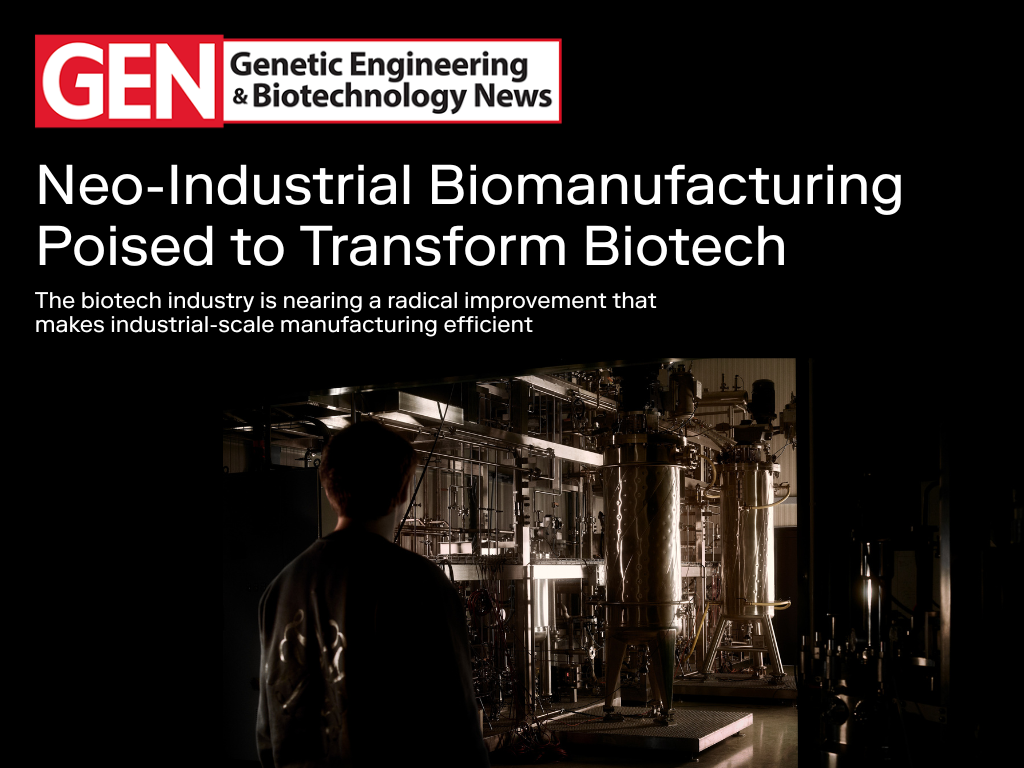GEN: Neo-Industrial Biomanufacturing Poised to Transform Biotech
By Gail Dutton
The biotech industry is nearing a radical improvement that makes industrial-scale manufacturing efficient
Despite the massive improvements in scale-up enabled by single-use bioreactors and a scale-out philosophy, going from process development scale to larger bioreactors remains tricky. That’s especially true when responsibilities are transferred among academic labs, contract development and manufacturing organizations (CDMOs), and biopharma companies, each of which may use different equipment.
Arsenale Bioyards recognized the inefficiencies and developed a platform that could radically change biomanufacturing, much like the Bessemer converter in the mid-19th century transformed the steel industry, making mass production not only possible but also cost-effective.
Traditionally, production processes are designed around a molecule. Arsenale reverses that workflow, focusing first on manufacturing. “By inverting the process, you can standardize the industrialization part…which brings down the cost massively,” Massimo Portincaso, MD, CEO, tells GEN.
“We bring the industrial conditions to the lab and let biologists design directly in a manufacturing environment,” Portincaso stresses. Therefore, developers can optimize a yeast-based expression platform around Arsenale’s production system and take it from lab to commercial-scale using the exact same processes and bioreactors.
Managing variables
To further streamline development, Arsenale leverages natural interdependencies among organisms, “rather than brute-forcing” molecule design. That approach presents many more design possibilities, says Portincaso. AI-enhanced organism and process design sorts through those alternatives, considering natural codependences and interrelationships, to find the options that are best-suited to industrialization.
High-sensitivity monitors, incorporated early during process development, provide real-time insights into critical process parameters. The resulting precision fermentation reduces development time and makes it easier to meet current good manufacturing practices. This overall approach, Portincaso says, “guarantee[s] that what you’re doing in the lab will scale industrially.”
Like a growing number of biotechs, Arsenale advocates scaling-out—rather than scaling-up—biomanufacturing. To do this, “We use AI to decompose the big industrial settings into sub-parts, run batteries of small bioreactors, and then recombine them, using AI to predict industrial-scale performance,” Portincaso says. This lets designers select not only the best molecule but also the best processing parameters. “For more capacity, we just add [additional] bioreactors.”
Using that process, “We aspire to cut costs by 90%,” he says. “We’re not there yet, but there’s a lot of room for innovation in the non-biopharma space and eventually also in biopharma.”
Biotech developers wanting to adopt this approach should do so as early as possible, Portincaso says. Ideally, that’s as soon as they achieve adequate output from their yeast-based expression platform. That’s because the lab and industrial infrastructures are tightly intertwined. To maximize the potential benefits, “It’s not [just] that you design in an industrial setting,” he explains, “but that you design in our industrial setting.”
That may sound self-serving, but Portincaso promises there’s a valid reason for his statement. Calibrating process development to this one setting provides a definite start and end point that limits the number of possible variables, he explains. Consequently, he says, “AI-based process development prediction becomes computationally tractable.”
Not a CDMO+
Arsenale’s business model appears to resemble a CDMO+ contract research organization (CRO), but Portincaso maintains that’s not the case. The key difference, aside from a “manufacturing-before-molecule” approach, is that Arsenale provides an enabling platform that biopharma manufacturers would use themselves.
“Biomanufacturers would develop the process and would own all of the data and the processes that are developed, so the learning stays with them,” Portincaso points out. The core platform isn’t ready for broad commercial use, but once it is solidified Portincaso says he plans to out-license it.
The first users are most likely to be food and cosmetics biomanufacturers, which are held to somewhat less stringent regulations than the pharmaceutical industry.
…


